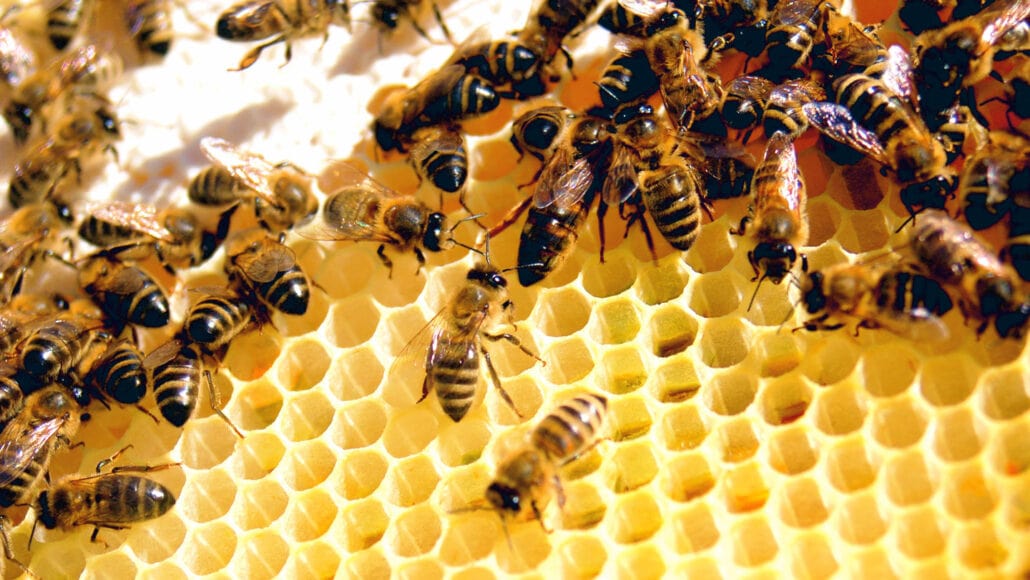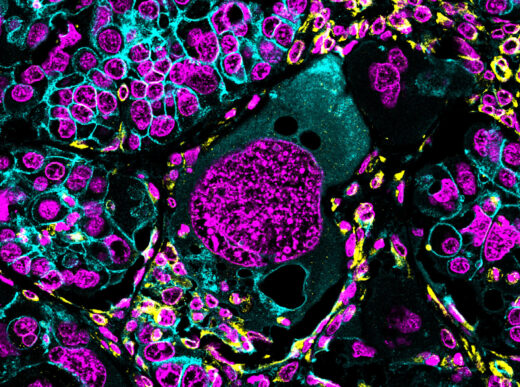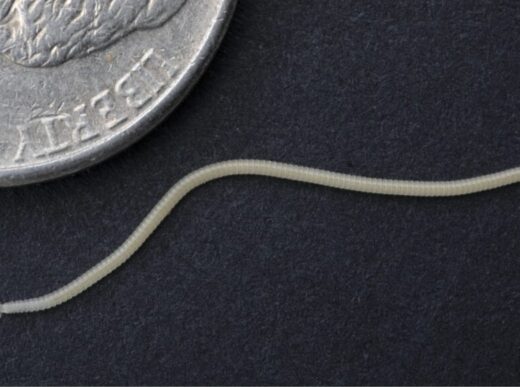In the intricate tapestry of nature’s creations, the seemingly unrelated worlds of bees and wasps intertwine with geometry, unraveling an astonishing solution to an architectural enigma. Through evolution, honeybees and yellow jackets, though diminutive in stature, have independently cracked the code of an intricate puzzle. As their colonies expand, the need to amalgamate hexagonal cells of varying sizes into a seamless structure arises. This is no mere coincidence; it’s a testament to their innate understanding of geometry. In a revelation that defies their small forms, these insects employ the fusion of hexagons and other polygons to craft an ingenious solution, providing invaluable insights into the harmonious synergy of biology and mathematics.
The Geometric Symphony of Bees and Wasps
Perched at the nexus of nature and mathematics, honeybees and yellow jackets orchestrate an awe-inspiring architectural feat. Within their colonies, they construct hexagonal cells that serve as the building blocks of their nests. However, the challenge arises when the need arises to accommodate larger cells within this hexagonal framework. This enigma necessitates an ingenious solution that transcends their tiny frames. By integrating five-sided and seven-sided cells, they bridge the gap between different hexagonal sizes, resulting in an intricate yet optimal solution. The synergy of biology and geometry blooms in the realm of these social insects, unveiling an uncharted dimension of their remarkable abilities.

A Mathematical Ballet in Nature’s Playground
The evolutionary journey of honeybees and yellow jackets is richly underscored by their nesting strategies. As these colonies flourish, the transition from nurturing workers to raising reproductives ushers in the need for larger hexagonal cells. The challenge of harmoniously interlocking hexagons of varying sizes becomes analogous to a complex tiling puzzle. Yet, with astute precision, these insects weave together pairs of polygons, strategically amalgamating five-sided and seven-sided cells. The result is a delicate equilibrium that deftly combines structural efficiency with mathematical elegance.
Peering into Nature’s Blueprint
Embarking on a journey of discovery, researchers delved into the intricate dance of geometry and biology within these colonies. Through meticulous analysis of images, a profound revelation emerged. The architectural brilliance of honeybees and yellow jackets came to light, manifesting as pairs of polygons that gracefully traverse hexagonal intricacies. These findings transcended mere hexagons, embracing a harmonic blend of shapes that redefine the boundaries of structural ingenuity.

The Dance of Evolution and Geometry
Despite the vast evolutionary chasm that separates these insects, their shared affinity for geometric solutions was unmistakable. United by the common thread of evolution’s wisdom, honeybees and yellow jackets both employ the five-seven pairing strategy to seamlessly transition between hexagonal sizes. This synchrony of architectural innovation across species demonstrates the remarkable capacity of evolution to optimize solutions and overcome challenges.
Insights from Mathematics to Nature’s Workshop
Venturing into the realm of mathematical modeling, researchers sought to decipher the intricate dance of geometry within these colonies. Mathematical constructs illuminated the delicate balance between structural precision and the transition to larger hexagons. The Delaunay triangulation model emerged as a beacon of understanding, mirroring the interplay of shapes in bee and wasp nests. The beauty of their solution lay in the strategic integration of five-seven pairs just before the tipping point, exemplifying the symbiotic relationship between nature’s architects and mathematical principles.
Conclusion: Nature’s Lessons in Harmony
As we navigate the labyrinth of nature’s mysteries, the world of bees and wasps offers a captivating revelation. Beyond their buzzing wings lies an intricate world where geometry and evolution converge, forging solutions that transcend their stature. The fusion of hexagons and polygons paints a portrait of architectural harmony, highlighting the genius that emerges from the natural world. In the dance of biology and mathematics, honeybees and yellow jackets whisper an invaluable lesson – that nature’s symphony is composed of harmonious threads that intertwine seamlessly, revealing the exquisite tapestry of existence.















